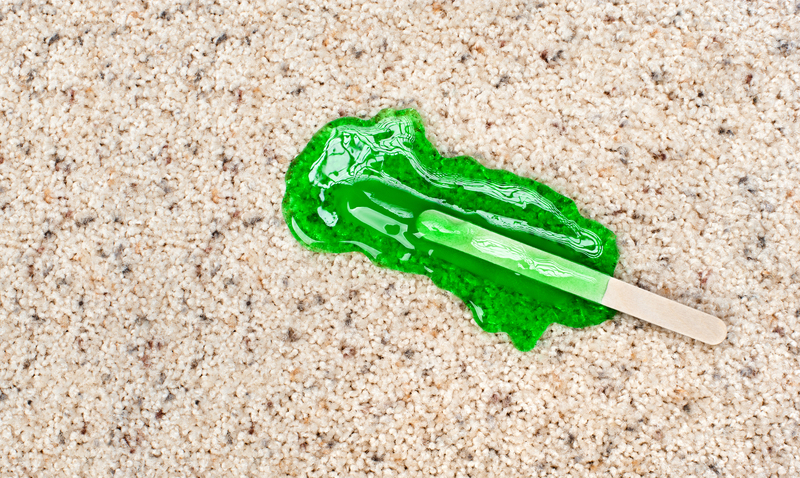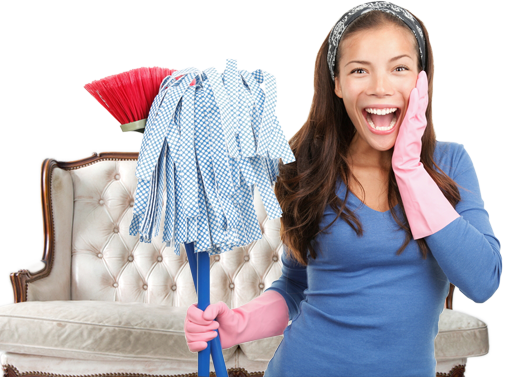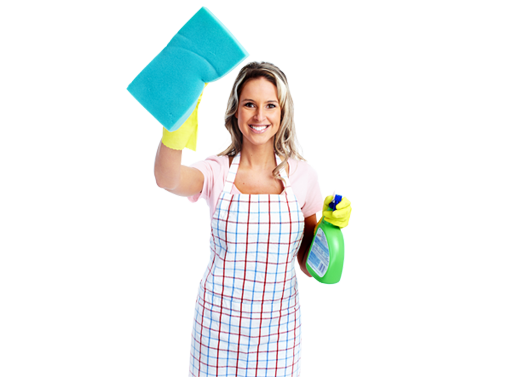Achieving an Immaculate, Allergen-Reduced Sanctuary
Posted on 28/06/2025
Achieving an Immaculate, Allergen-Reduced Sanctuary: The Complete Guide
Living in a clean, allergen-free home is crucial for anyone who values wellness, especially those affected by allergies and respiratory issues. Building a true sanctuary -- a space that fosters health, tranquility, and cleanliness -- requires knowledge, dedication, and the right strategies. In this in-depth guide, we'll outline actionable steps to achieving an immaculate, allergen-reduced sanctuary that supports your well-being and offers genuine comfort.

Understanding Household Allergens: The First Step to Allergen Reduction
Before transforming your living space into a haven, it's essential to understand the most common household allergens and how they operate. Some of the main culprits include:
- Dust mites - Microscopic organisms thriving in bedding, soft furnishings, and carpets.
- Pollen - Outdoor allergen that easily drifts indoors through open windows and doors.
- Pet dander - Tiny flakes of skin shed by cats, dogs, and other furry companions.
- Mold spores - Fungi that flourish in damp, humid environments such as bathrooms and basements.
- Cockroach droppings - Often found in kitchens and contribute significantly to indoor allergies.
Identifying and controlling these sources is foundational to achieving an immaculate allergen-reduced home.
Step-by-Step Room-by-Room Allergen Reduction
1. The Allergen-Controlled Entryway
The journey to an allergen-reduced sanctuary begins as soon as you cross the threshold. The entryway can easily become a highway for pollen, dust, and debris. Here's how to minimize contaminants right from the start:
- Shoe-Free Policy: Encourage all inhabitants and guests to remove footwear at the door to avoid tracking allergens inside.
- Welcome Mats: Place coarse-fiber mats outside and inside to catch particles.
- Storage Solutions: Use baskets or cubbies for outdoor apparel and bags, all of which can collect dust and pollen.
2. Immaculate Living Areas
Living rooms and lounges are high-traffic areas prone to collecting dust mites, pet hair, and pollen. Effective cleaning techniques and strategic decor choices make a significant impact:
- Declutter Regularly: Fewer items means fewer surfaces for dust to settle. Opt for minimalistic decor.
- Vacuum with HEPA Filters: A HEPA vacuum captures even the smallest allergens in carpets and upholstery.
- Hard Flooring over Carpets: Whenever possible, choose hardwood, tile, or vinyl flooring for easy cleaning and less dust accumulation.
- Allergy-Proof Upholstery: Use leather, faux leather, or washable slipcovers.
- Air Purifiers: A quality air purifier with a certified HEPA filter removes airborne allergens efficiently.
3. Creating a Dust-Mite-Free Bedroom Oasis
An allergen-controlled bedroom is vital for restorative sleep and overall health. Dust mites and pet dander are the biggest threats here. Maximize your bedroom's sanctuary status with these steps:
- Encase Mattresses and Pillows: Use dust mite-proof covers to block microscopic invaders.
- Wash Bedding Weekly: Hot water (at least 130?F/54?C) kills dust mites and evaporates allergens.
- Minimize Soft Furnishings: Eliminate unnecessary throws, stuffed animals, and heavy drapes that trap allergens.
- No Pets in the Bedroom: This critical boundary dramatically reduces exposure to dander and fur.
- Replace Old Mattresses and Pillows: Over time, these become reservoirs of allergens.
4. Sparkling Allergen-Reduced Bathrooms
Humidity makes the bathroom a breeding ground for mold spores and dust. Maintain an immaculately clean bathroom with the following tips:
- Ventilate Well: Keep the exhaust fan running or windows open during and after showers to reduce moisture.
- Use Mold-Resistant Products: Anti-fungal sprays and tiles make cleaning easier and prevent growth.
- Wash Rugs and Towels Often: Launder these weekly in hot water to keep mold and dust at bay.
- Fix Leaks Promptly: Any persistent dampness will promote mold proliferation.
5. An Allergen-Proof Kitchen
Kitchens attract cockroaches, mold, and dust -- all major indoor allergens. To maintain a pristine, allergen-reduced sanctuary in your kitchen:
- Store Food in Airtight Containers: Discourage pests and limit food odors.
- Clean Up Crumbs Immediately: Wipe counters and floors daily.
- Seal Cracks: Prevent pests and dampness by sealing any wall or floor cracks.
- Dispose of Trash Daily: Eliminate food sources for pests and minimize odors.
- Check for Leaks: Moisture behind appliances or under sinks encourages mold growth.
Whole-Home Strategies for Achieving an Immaculate, Allergen-Controlled Environment
Optimize Indoor Air Quality
- Maintain Ideal Humidity: Keep home humidity between 30%-50% using dehumidifiers or humidifiers as needed, as dust mites and mold thrive in high humidity.
- Upgrade Air Filters: Replace HVAC filters with high-efficiency models (MERV 11 or higher) and change them every season.
- Install HEPA Air Purifiers: Particularly in bedrooms and living areas, effective for capturing particulates as small as 0.3 microns.
Smart Cleaning Routines and Product Choices
- Use Hypoallergenic Cleaning Products: Avoid harsh chemicals and fragrances that can act as irritants and trigger allergies.
- Wet Dusting Instead of Dry: Use a damp microfiber cloth, which traps dust and allergens rather than spreading them around.
- Wash Curtains and Blinds Regularly: Fabrics and horizontal surfaces collect dust.
- Vacuum at Least Twice Weekly: Especially essential for homes with carpets and pets.
Eliminate Allergy-Prone Decor and Clutter
- Replace Carpets with Hard Surface Floors wherever possible.
- Minimize Wall Hangings and Knickknacks: These collect dust and are hard to clean regularly.
- Choose Simple Window Coverings: Prefer washable shades or blinds over heavy curtains.
Allergen-Reduced Sanctuary for Pet Owners
Pets enrich our lives, yet they can be a challenging source of allergens. Here's how to harmonize animal companions with a clean, allergen-reduced home:
- Designate Pet-Free Bedrooms: Enforce boundaries for better sleep and fewer allergens in your most sacred space.
- Groom Pets Frequently: Regular baths and brushing remove loose fur and dander.
- Clean Pet Bedding Often: Wash beds and blankets in hot water weekly.
- Utilize HEPA Vacuums and Air Purifiers: Capture floating fur and dander before it settles on surfaces.
Seasonal Maintenance for an Immaculate Home Year-Round
Allergens change with the seasons. Adjust your routines to maintain your immaculate, allergen-reduced sanctuary all year:
- Spring/Summer: Focus on pollen control. Keep windows shut on high pollen days; shower and change clothes after outdoor activities.
- Fall: Prepare for potential mold spores and increased indoor dust as windows close. Clean heating systems and air ducts.
- Winter: Watch out for dry air; use a humidifier if necessary to avoid dry, irritated airways (but keep moisture within recommended levels).
Embracing Minimalism for Allergen-Free Serenity
Beyond cleaning, adopting a minimalist lifestyle can create a more manageable, allergy-controlled living environment. Minimalism encourages fewer possessions, translating to fewer places where allergens can accumulate and easier cleaning.
Consider these minimalist strategies:- Pare Down Your Belongings: Regularly donate or discard unused items, clearing surfaces and storage areas.
- Choose Functional, Easy-to-Clean Decor: Select furniture and decorations that promote open space and can be wiped down easily.
- Implement Regular Organization Habits: Maintain order with baskets, bins, and routine decluttering sessions.

Advanced Tips for Achieving an Immaculate, Allergy-Reduced Sanctuary
Consider Professional Allergen Treatments
- Professional Carpet and Upholstery Cleaning: At least once or twice a year, enlist certified cleaners to deep-clean textiles and eliminate deep-seated allergens.
- HVAC System Maintenance: Schedule yearly inspections and cleanings for your heating and cooling systems to prevent allergen buildup and spread.
- Mold Remediation: If you suspect or identify a serious mold problem, professional remediation is essential for health and home integrity.
Opt for Eco-Friendly and Hypoallergenic Materials
- Bamboo or Hardwood Floors: Naturally hypoallergenic and easy to maintain.
- Organic, Chemical-Free Fabrics: Sheets, pillowcases, and curtains made from organic cotton reduce chemical exposure and are gentler on sensitive skin.
- Water-Based Paints and Natural Finishes: Reduce VOCs (volatile organic compounds) in your indoor air.
Stay Vigilant: The Importance of Consistency
The key to maintaining an immaculate, allergen-controlled environment is consistency. Create a cleaning calendar and schedule routine maintenance for maximum effectiveness. Habits formed around hygiene and tidiness pay dividends in long-term health and comfort.
Conclusion: Your Path to an Immaculate, Allergen-Reduced Home Sanctuary
Creating a truly immaculate and allergen-reduced sanctuary is a journey requiring intention, effort, and the right strategies. By combining smart cleaning routines, thoughtful product choices, strategic home modifications, and seasonal vigilance, any home can become a safe haven from allergens.
Invest in your health by making your home -- from the entryway to the bedroom -- a serene, allergy-reduced sanctuary. The results extend beyond fewer sneezes and coughs: they include improved sleep, better energy, and ultimate peace of mind.
Start small, stay consistent, and experience the transformative power of an immaculate, allergen-reduced home. Your sanctuary awaits!





